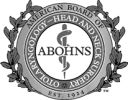Dermabrasion in Virginia, Washington D.C. and Maryland.
Embark on a journey of aesthetic excellence with The Naderi Center. Experience unparalleled artistry and precision for transformative beauty.
Unlock Dermabrasion Benefits for Youthful Skin
Transform your skin’s texture and reveal your inner radiance with Dermabrasion. At The Naderi Center in Virginia, we offer this cutting-edge treatment to solve multiple skin issues. Engineered for those who demand excellence, Dermabrasion provides a range of benefits that will redefine your understanding of what skincare can achieve.
Smooth Complexion
Dermabrasion expertly removes rough layers, giving your skin a smooth, fresh appearance that's irresistibly touchable.
Scar Reduction
Bid farewell to acne scars and minor imperfections. Dermabrasion's precise targeting revitalizes your look.
Fine Line Eraser
Turn back the clock subtly and effectively. Our Dermabrasion treatment diminishes fine lines, enhancing your youthful allure.


The Role of Epidermis in Effective Dermabrasion
Skin is a far more complicated structure than most people realize. It is an organ, just as the stomach and liver are organs, but it is the largest organ in the body. It is the body’s first line of defense against infection. Skin has temperature regulation capabilities enabling the body to maintain the correct temperature. It contains both sweat and sebaceous (oil) glands and sensory structures to gather information about the environment, and specialized nerve receptors for pressure, touch, pain, heat, and cold. Skin produces vitamin D and the pigment melanin which protects us from damaging ultraviolet sunrays.
The skin has three distinct layers: the outer layers of skin (epidermis), the thicker dermis, and the underlying subcutaneous tissue. The deepest layer, the subcutaneous layer or hypodermis, contains a layer of fat to conserve heat and insulate the body. Blood vessels passing through the hypodermis supply blood to the entire skin structure. The dermis is a meshwork of the protein collagen that provides strength, reticular fibers that provide support, and elastic fibers that add flexibility. The dermis contains the glands and sensory receptors, nerves, muscles, and hair follicles. The outermost layer, the epidermis, is the layer that is most important during the cosmetic procedure called dermabrasion. The epidermis has five layers, and it is only the outer layer of the epidermis, the stratum corneum, that is removed by skin resurfacing technique. Once this surface layer is abraded, cells divide into deeper layers and new cells migrate to the surface.

Ideal Candidate for Dermabrasion
Ideal candidates for dermabrasion are individuals who have:
- Sun damage
- Uneven skin tone or texture
- Acne scars
- Fine lines and wrinkles
- Age spots or hyperpigmentation
It is important that candidates have realistic expectations about the results of dermabrasion. While the procedure can improve the appearance of the skin, it may not completely eliminate all imperfections. Candidates should also be in good overall health and have a positive attitude towards the recovery process and have no active cold sores, sunburns, or acne.
It is recommended to consult with a qualified dermatologist or plastic surgeon to determine if dermabrasion is the right treatment option for your specific skin concerns. By discussing your goals and expectations, a personalized treatment plan can be created to help you achieve smoother, more youthful-looking skin.
The Dermabrasion Procedure
Dermabrasion removes sun-damaged skin and age spots through controlled surgical scraping. It also reduces acne scars and may be used on precancerous growths known as keratoses. Dermabrasion successfully removes wrinkles around the mouth. By removing irregularities, it gives the skin a much smoother, more youthful appearance. In preparation for dermabrasion, you will need to stop taking medications that affect blood clotting. You’ll need to stop smoking at least a week prior to the procedure as smoking decreases blood circulation to the skin and may interfere with healing.
The dermabrasion procedure is done in The Naderi Center’s clinic at both the Reston, Virginia, and Chevy Chase, Maryland locations. It is performed using local anesthesia such as lidocaine, often combined with sedation. Sometimes the area is sprayed with a freezing or cryogenic spray to firm up the skin for abrasion. General anesthesia may be used if the entire face will be treated or if there are deeper wrinkles or scars that will be treated. Our surgeons at The Naderi Center, using a wire brush or a motorized diamond wheel with rough edges, will scrape away the skin, a process that causes bleeding. After the dermabrasion procedure, your skin will be red and swollen. It may tingle or ache or even have a burning sensation. It may be difficult to talk or eat at first. Some patients need painkillers. Should swelling occur, a corticosteroid may be prescribed.
Cost of Dermabrasion in Virginia and Maryland
The cost of dermabrasion in Virginia and Maryland can be influenced by various factors such as the surgeon’s fee, hospital and surgical facility fees, follow-up visits, and location. The experience and reputation of the surgeon performing the procedure can impact the overall cost. Additionally, the fees associated with utilizing a hospital or surgical facility for the procedure can vary. Follow-up visits to monitor recovery and ensure optimal results may also contribute to the total cost. Furthermore, geographic location plays a role in pricing, as costs tend to be higher in metropolitan areas compared to rural areas.
Recovery After Dermabrasion Virginia
After undergoing dermabrasion, the dermabrasion recovery process is crucial for optimal results. As mentioned in the text, a scab will form over the treated area, and new skin will begin to grow in about five to eight days. During this time, it is essential to follow our surgeons’ recommendations at The Naderi Center, which may include using ointments to aid in the healing process.
The recovery time for dermabrasion can take several months as the skin heals. The new skin that forms will be bright pink and very sensitive for up to three months. Patients may choose to wear makeup during this time to help conceal any redness or discoloration.
It is recommended to take at least three weeks off from work initially to allow your skin to properly heal. It is also important to avoid sun exposure until the pigment has fully returned to your face, which can take anywhere from six months to a year. Daily use of sunscreen is highly advised throughout the recovery process.
Follow-up visits with our surgeons at The Naderi Center are essential during the recovery phase. A follow-up visit around the 3rd week after surgery will allow our team to assess your progress and address any skin concerns you may have. It typically takes a couple of weeks for the new skin cells to regrow completely and you see your natural skin color again, so patience and proper care are key during this time.
Risks, Safety, and Potential Complications after a Dermabrasion Treatment
As with any surgical procedure, there are potential risks. Side effects that are common and temporary include redness, a few dermabrasion bruises, swelling, acne flare-ups, sensitivity to the sun, and an increase in the color of the skin. This last side effect, a darkening of the skin, may occur if you spend time in the sun weeks or months after the procedure. Infection and scarring are rare but will be noticed by skin that becomes raised, red, and itchy. Less common side effects include infection, scarring, persistent redness, and a loss in the color of the skin, which may be a problem in dark-skinned patients and usually occurs when using a higher depth of dermabrasion.
Today, correcting surface irregularities and removing fine wrinkles can be accomplished with a variety of procedures in addition to dermabrasion such as chemical peels and CO2 and Erbium lasers. Laser treatments are more precise and more expensive. A consultation with our surgeons at The Naderi Center may lead you to use a combination of procedures for your particular skin issues. Call for an appointment at The Naderi Center Cosmetic Surgery and Skin Care Offices in Chevy Chase, Maryland, 301-222-2020 or Reston, Virginia, 703-481-0002.
Dermabrasion FAQs
What is the difference between dermabrasion and microdermabrasion?
Dermabrasion is a more intense and aggressive procedure compared to microdermabrasion. Dermabrasion involves the removal of multiple layers of skin using a wire brush or diamond wheel, resulting in significant downtime and longer recovery periods. On the other hand, microdermabrasion is a gentler treatment that uses tiny crystals or a diamond-tipped wand to exfoliate the outermost layer of skin. Microdermabrasion requires little to no downtime and is often used for superficial skin concerns such as mild acne scars or dull skin texture.
How many dermabrasion treatments do I need?
The number of dermabrasion treatments needed varies depending on the individual’s skin concerns and desired results. In general, most patients only require one treatment to achieve their desired outcome. However, some individuals may benefit from multiple sessions spaced several weeks apart for more significant improvements in skin texture and appearance. Our surgeons at The Naderi Center will assess your skin during a consultation to determine the best treatment plan for you.
How long does dermabrasion take to heal?
The healing process after dermabrasion can vary from person to person, but on average it takes about 1-2 weeks for the skin to fully heal. During this time, patients may experience redness, swelling, and peeling as the skin regenerates. It is important to follow post-procedure instructions provided by your dermatologist and avoid sun exposure to ensure proper healing. Patience and diligent skincare are key factors in achieving optimal results from dermabrasion treatment.
What Dermabrasion office is near me?
If you live in the states of Virginia or Maryland, The Naderi Center for Plastic Surgery and Dermatology offers Dermabrasion among its services. For a full list of services, please visit our Locations page.